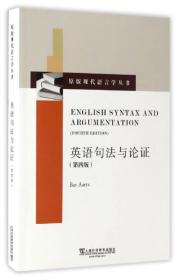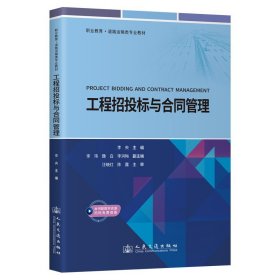
英语句法与论证(第4版 英文版)
全新正版未拆封
¥ 32.31 5.4折 ¥ 60 全新
仅1件
四川成都
认证卖家担保交易快速发货售后保障
作者[英]巴斯·阿尔茨 著
出版社上海外语教育出版社
出版时间2017-02
版次1
装帧平装
上书时间2024-03-29
- 最新上架
商品详情
- 品相描述:全新
图书标准信息
- 作者 [英]巴斯·阿尔茨 著
- 出版社 上海外语教育出版社
- 出版时间 2017-02
- 版次 1
- ISBN 9787544645188
- 定价 60.00元
- 装帧 平装
- 开本 16开
- 纸张 胶版纸
- 页数 341页
- 字数 580千字
- 正文语种 英语
- 丛书 原版现代语言学丛书
- 【内容简介】
- 《英语句法与论证(第4版 英文版)》是“原版现代语言学系列”丛书中的一本。本书全面介绍了英语句法中的基本概念,并由浅入深地分析英语词汇、短语、连贯、辩论等各种句法学要点。第四版专门增加一章介绍如何分析英语的时体态势。《英语句法与论证(第4版 英文版)》供相关研究人员参考。
- 【目录】
-
Preface to the First Edition
Preface to the Second Edition
Preface to the Third Edition
Preface to the Fourth Edition
Part I Function and Form
Introduction
Key Concepts
Function
2.1 Subject and Predicate
2.2 Predicator
2.3 Direct object
2.4 Indirect object
2.5 Adjunct
Key Concepts
Exercises
Further Reading
Form: Words, Word Classes and Phrases
3.1 The notion 'word'
3.2 Nouns and determinatives
3.3 Adjectives
3.4 Verbs
3.5 Prepositions
3.6 Adverbs
3.7 Conjunctions
3.8 Interjections
Key Concepts
Exercises
Further Reading
More on Form: Clauses and Sentences
4.1 Clauses and clause hierarchies
4.2 The rank scale
4.3 Clause types
4.3.1 Declarative clauses
4.3.2 Interrogative clauses
4.3.3 Imperative clauses
4.3.4 Exclamative clauses
4.3.5 The pragmatics of the clause types
4.4 More on tree diagrams
Key Concepts
Exercises
Further Reading
The Function-Form Interface
5.1 Function-form relationships
5.2 Realisations of the Subject
5.3 Realisation of the Predicate and Predicator
5.4 Realisations of the Direct object
5.5 Realisations of the Indirect object
5.6 Realisations of Adjuncts
Key Concepts
Exercises
Further Reading
Part II Elaboration
6 Predicates, Arguments and Thematic Roles
6.1 Predicates and arguments
6.2 Thematic roles
6.3 Grammatical functions and thematic roles
6.4 Selectional restrictions
6.5 Three levels of description
Key Concepts
Exercises
Further Reading
7 Cross-Categorial Generalisations: X-Bar Syntax
7.1 Heads, Complements and Specifiers
7.2 Adjuncts
7.3 Cross-categorial generalisations
7.4 Subcategorisation
7.4.1 Subcategorisation versus argument/thematic structure
Key Concepts
Exercises
Further Reading
8 More on Clauses
8.1 The I-node
8.2 Subordinate clauses
8.2.1 Clauses functioning as Direct object, Subject and Adjunct
8.2.2 Clauses functioning as Complements within phrases
8.2.3 Clauses functioning as Adjuncts within NPs
Key Concepts
Exercises
Further Reading
Movement
9.1 Verb Movement: aspectual auxiliaries
9.2 NP-Movement: passive
9.3 NP-Movement: Subject-to-Subject Raising
9.4 Movement in interrogative sentences: Subject-Auxiliary Inversion
9.5 Wh-Movement
9.6 The structure of sentences containing one or more auxiliaries
Key Concepts
Exercises
Further Reading
10 Tense, Aspect and Mood
10.1 Time and tense
10.1.1 The present tense
10.1.1.1 Uses of the present tense
10.1.2 The past tense
10.1.2.1 Uses of the past tense
10.1.3 Ways of referring to future time
10.2 Aspectualityand aspect
10.2.1 Progressive aspect
10.2.1.1 The progressive construction
10.2.1.2 Uses of the progressive
10.2.2 Perfect aspect
10.2.2.1 The perfect construction
10.2.2.2 Uses of the present perfect
10.3 Modality and mood
10.3.1 Different types ofmodality
10.3.2 The core modals
10.3.2.1 The morpho-syntactic characteristics of the core modals
10.3.2.2 Meanings expressed by the core modals
10.3.3 Other ways of expressing modality
Key Concepts
Exercises
Further Reading
Part III Argumentation
11 Syntactic Argumentation
11.1 The art of argumentation
11.2 Economy of description: Linguistically Significant Generalisations and Occam's Razor
11.2.1 Linguistically Significant Generalisations
11.2.2 Occam's Razor
11.2.2.1 Verb-preposition constructions
11.2.2.2 Achieving economy in the domain of functional terminology
11.3 Further constraints on description: elegance and independent justifications
11.3.1 Elegance of description
11.3.2 Independent justification
11.4 Evaluating analyses
Key Concepts
Exercises
Further Reading
12 Constituency: Movement and Substitution
12.1 The Movement Test
12.1.1 Movements to the left
12.1.1.1 Topicalisation
12.1.1.2 VP-Preposing
12.1.1.3 Though-Movement
12.1.2 Movements to the right
12.1.2.1 Heavy-NP-Shift
12.1.2.2 Extraposition of Subject clauses
12.1.2.3 Extraposition from NP
12.2 Substitution
12.2.1 Substitution of nominal projections: NP and N"
12.2.2 Substitution of verbal projections: VP and V'
Key Concepts
Exercises
Further Reading
13 Constituency: Some Additional Tests
13.1 The Coordination Test
13.2 The Cleft and Pseudocleft Test
13.3 The Insertion Test
13.4 The Constituent Response Test
13.5 The Somewhere Else Test
13.6 The Meaning Test
13.7 A case study: the NakedPizza Eating-construction
13.8 Some caveats regarding the tests
Key Concepts
Exercises
Further Reading
14 Predicates and Arguments Revisited
14.1 Establishing argumenthood
14.1.1 Meaning
14.1.2 Dummy elements and idiom chunks
14.1.3 Passivisation
14.2 Two further types of verb + NP + to-infinitive construction:persuade and want
14.2.1 Persuade
14.2.2 Want
14.2.3 Overview
14.3 Concluding remarks
Key Concepts
Exercises
Further Reading
Part IV Application
15 Grammatical Indeterminacy
15.1 Category boundaries and gradience
15.2 Subsective gradience
15.2.1 Nouns
15.2.2 Adjectives
15.2.3 Verbs
15.2.4 Prepositions
15.3 Intersective gradience
15.3.1 Word classes: adjective or adverb?
15.3.2 Word classes: verb or noun?
15.3.3 Phrases: adjective phrase or prepositional phrase?
15.3.4 Constructional gradience
15.4 Concluding remarks
Key Concepts
Exercises
Further Reading
16 Case Studies
16.1 Negated modal auxiliaries
16.2 Noun phrase structure
16.2.1 A lot of books
16.2.2 A giant of a man
16.3 Verb complementation
16.3.1 Pattern 1: V + to-infinitive
16.3.2 Pattern 2: V + NP + to-infinitive constructions involving allow
16.3.3 Pattern 3: V + NP + {NP/AP/PP}
16.4 Subordinating conjunctions and prepositions
16.5 Concluding remarks
Key Concepts
Exercises
Further Reading
Glossary
Reference Works: Dictionaries, Encyclopedias, Grammars
and Other Publications on the English Language
Bibliography
Index
点击展开
点击收起
相关推荐
— 没有更多了 —




















以下为对购买帮助不大的评价